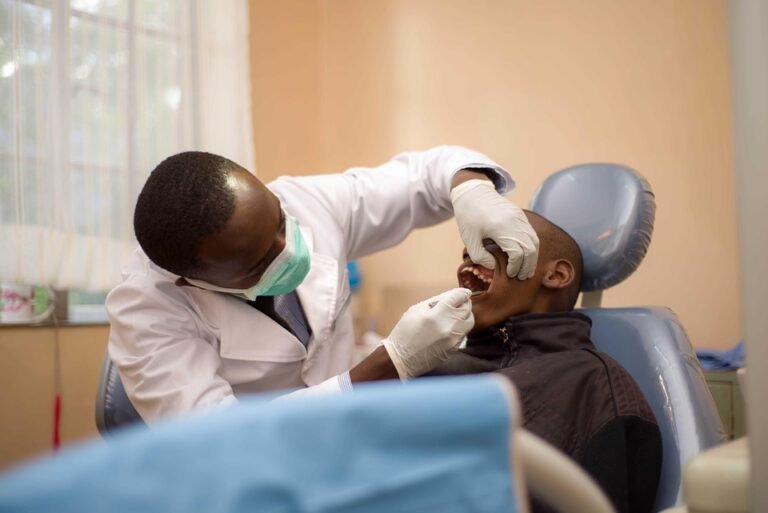How does online education address infection control and safety protocols?
I’m thinking about taking some online courses in healthcare, possibly nursing or medical assisting. Obviously, a big part of those fields is infection control and patient safety. It’s easy to see how that would be taught in a hands-on, in-person setting with labs and clinicals, but I’m really wondering how online programs handle that kind of training. Are there simulations? Are there videos? Does it feel like enough to really prepare you for dealing with real patients and potential infection risks in a clinical environment? Are there any specific online courses or program features I should be looking for that prioritize practical application of infection control principles? I’m worried about feeling unprepared when I eventually do get into a physical healthcare setting.
Answer
Online education addresses infection control and safety protocols primarily by focusing on theoretical knowledge, awareness, and application to real-world scenarios. While it cannot provide hands-on experience in physical spaces, it utilizes various methods to convey crucial information and promote safe practices.
Curriculum and Content Delivery:
-
Dedicated Modules/Courses: Online healthcare programs, particularly those related to nursing, allied health, and public health, often incorporate dedicated modules or courses specifically on infection control and safety. These cover topics like:
- Microbiology: Understanding pathogens (bacteria, viruses, fungi, parasites), their modes of transmission, and factors influencing their survival.
- Chain of Infection: Learning about the six links in the chain of infection (infectious agent, reservoir, portal of exit, mode of transmission, portal of entry, susceptible host) and how to break them.
- Standard Precautions: Emphasizing hand hygiene, personal protective equipment (PPE) use (gloves, masks, gowns, eye protection), respiratory hygiene and cough etiquette, safe injection practices, and sharps safety.
- Transmission-Based Precautions: Covering contact, droplet, and airborne precautions, when to use them, and specific PPE requirements.
- Disinfection and Sterilization: Learning about different methods of cleaning, disinfection, and sterilization of equipment and surfaces, including appropriate chemicals and procedures.
- Waste Management: Proper handling and disposal of infectious waste.
- Environmental Safety: Maintaining a clean and safe environment to prevent the spread of infection.
- Healthcare-Associated Infections (HAIs): Understanding common HAIs, their causes, and strategies for prevention (e.g., catheter-associated urinary tract infections, surgical site infections).
- Emerging Infectious Diseases: Staying updated on new and emerging infectious diseases, their characteristics, and recommended control measures.
- Regulatory Guidelines: Familiarizing students with relevant guidelines and regulations from organizations like the Centers for Disease Control and Prevention (CDC), the World Health Organization (WHO), and Occupational Safety and Health Administration (OSHA).
-
Multimedia Resources: Online courses often utilize a variety of multimedia resources to enhance learning:
- Videos: Demonstrations of proper hand hygiene techniques, PPE donning and doffing procedures, and other safety practices.
- Animations: Visual representations of pathogen transmission and the effectiveness of different control measures.
- Interactive Simulations: Virtual scenarios where students can practice decision-making in infection control situations.
- Infographics: Concise summaries of key concepts and guidelines.
- Case Studies: Real-world examples of infection outbreaks and how they were managed.
- Virtual Reality (VR): Immersive experiences that simulate healthcare environments, allowing students to practice safety protocols in a realistic setting.
- Accessible and Up-to-Date Information: Online platforms allow for quick and easy updates to course content, ensuring that students have access to the most current information and guidelines related to infection control and safety.
Assessment and Evaluation:
- Quizzes and Exams: Regularly assess students’ understanding of key concepts and principles.
- Case Study Analyses: Require students to analyze real-world scenarios and apply their knowledge to identify potential risks and recommend appropriate control measures.
- Simulation-Based Assessments: Evaluate students’ ability to apply infection control protocols in simulated environments.
- Written Assignments: Research papers or essays on specific infection control topics.
- Discussion Forums: Encourage students to discuss relevant issues and share their perspectives.
Bridging the Gap with Practical Experience:
- Clinical Placements/Practicums: Many online healthcare programs require students to complete clinical placements or practicums in real-world healthcare settings. These experiences provide opportunities to apply their knowledge under the supervision of experienced professionals and gain hands-on experience in implementing infection control and safety protocols.
- Skills Labs (Hybrid Programs): Some online programs incorporate in-person skills labs where students can practice essential skills, such as PPE donning and doffing, under the guidance of instructors.
- Collaboration with Healthcare Professionals: Some online programs involve healthcare professionals as guest speakers or mentors, providing students with insights into real-world challenges and best practices in infection control.
Focus on Responsibility and Ethics:
- Emphasis on Professionalism: Online education emphasizes the importance of ethical conduct and professional responsibility in maintaining a safe environment for patients and healthcare workers.
- Communication Skills: Training in effective communication techniques to promote clear and accurate information sharing regarding infection control measures.
- Advocacy: Encouraging healthcare professionals to advocate for policies and practices that promote infection control and safety in their workplaces.





